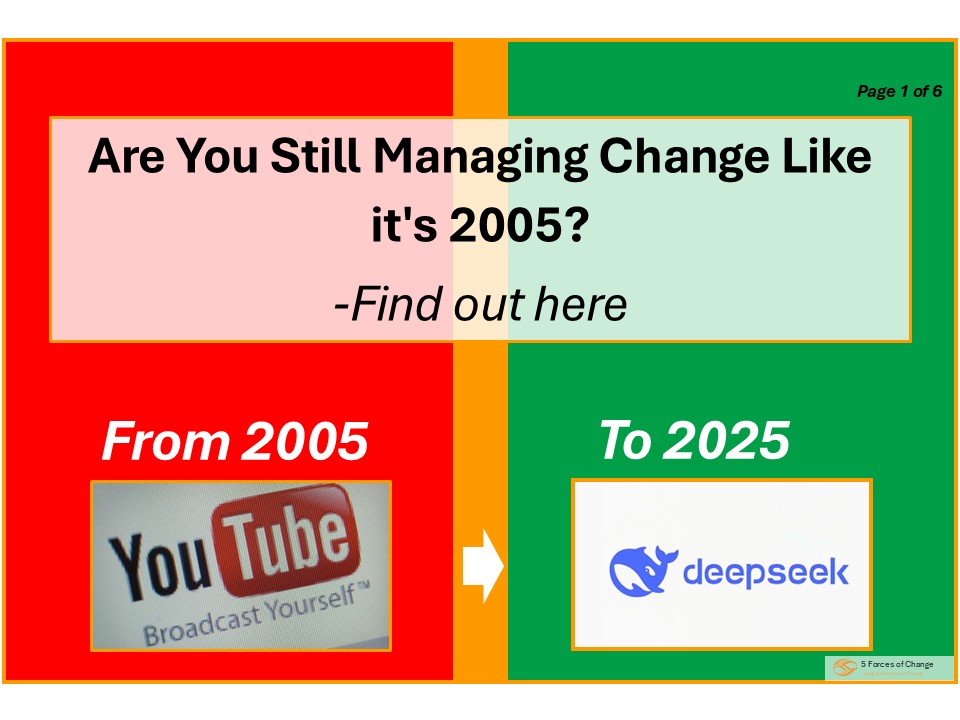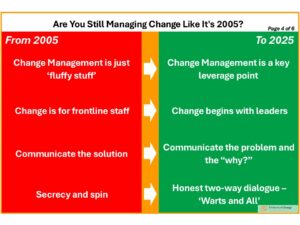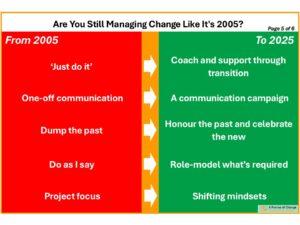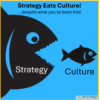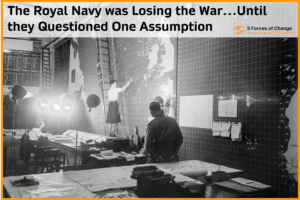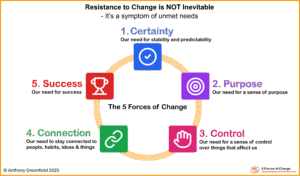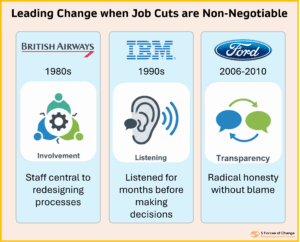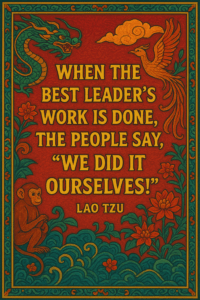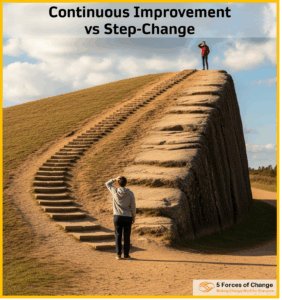Walk into any boardroom during a transformation initiative, and you’ll hear familiar refrains: “We need to communicate the vision better.” “People just need to understand the business case.”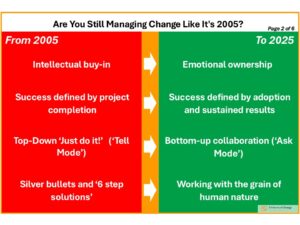 “Let’s create a sense of urgency.” These approaches might have worked twenty years ago. Today? They’re actively counterproductive. Are you still managing change like it’s 2005?
“Let’s create a sense of urgency.” These approaches might have worked twenty years ago. Today? They’re actively counterproductive. Are you still managing change like it’s 2005?
The Fatal Flaw of Old-School Change Management
Traditional change management treated people as passive recipients—obstacles to overcome rather than assets to leverage. It focused on intellectual buy-in through PowerPoint presentations, assuming that if people understood the “why,” they’d naturally embrace the “how.”
Here’s the uncomfortable truth: People don’t resist change they resist being changed. There’s a profound difference.
The Modern Mindset Shift
Today’s most successful initiatives operate from a completely different foundation. Instead of managing change TO people, effective leaders manage change WITH people.
Modern change management recognizes that sustainable transformation happens at the emotional level, not just intellectual. While the old approach aimed for intellectual buy-in, the new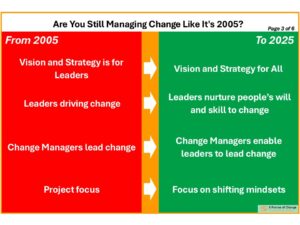 approach strives for **emotional ownership** by connecting change to people’s personal values and day-to-day work.
approach strives for **emotional ownership** by connecting change to people’s personal values and day-to-day work.
Consider the difference:
Old: “We’re implementing this system because it increases efficiency by 15%”
New* “What frustrations do you face with our current process, and how might we solve them together?”
The first positions people as passive consumers. The second makes them active co-creators.
From Project Completion to Sustained Adoption
The most critical shift? How we define success.
Traditional change management declared victory when projects were delivered on time and budget. Modern change management measures success by adoption rates and sustained behavioral change long after the project team has disbanded.
This changes everything—how we structure initiatives, allocate resources, measure progress. It means investing in post-implementation support, building feedback loops, and creating systems that reinforce new behaviors until they become habitual.
The Power of Bottom-Up Collaboration
The best solutions often come from those closest to the actual work. Instead of executives and consultants designing solutions in isolation, successful organizations tap into their workforce’s collective intelligence.
This collaborative approach:
- Generates better solutions
- Builds authentic buy-in
- Develops change capability throughout the organization
When people help design the change, they don’t just implement it they own it.
Building Change Capability, Not Just Managing Change Events
Modern organizations don’t just manage individual initiatives they build organizational change capability. As a result, they develop cultures where adaptation is part of everyone’s job, not just the change management office.
Episodic transformation → TO continuous evolution
External consultants driving → TO internal champions leading
Specialized skill → TO core competency for all managers
The Bottom Line
Organizations that make this mindset shift don’t just achieve better change outcomes they develop sustainable competitive advantages.
Because in today’s world, the ability to change isn’t just a project competency it’s an organizational survival skill.
Question: Are you still managing change like it’s 2005? Which outdated change management habit is your organization still clinging to? See website for guidance.

